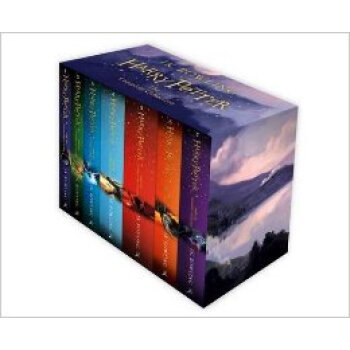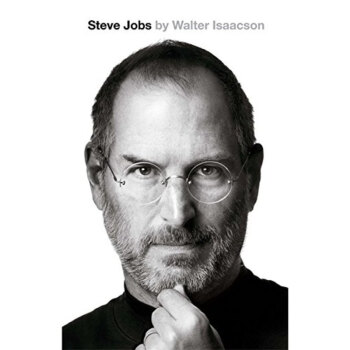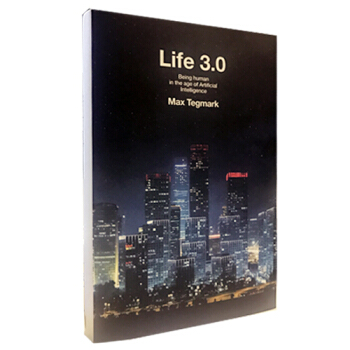![Cosmos 英文原版 [平裝]](https://pic.windowsfront.com/19523894/54696f57N08de095e.jpg)

具體描述
內容簡介
RETURNING TO TELEVISION AS AN ALL-NEW MINISERIES ON FOX "Cosmos" is one of the bestselling science books of all time. In clear-eyed prose, Sagan reveals a jewel-like blue world inhabited by a life form that is just beginning to discover its own identity and to venture into the vast ocean of space. Featuring a new Introduction by Sagan's collaborator, Ann Druyan, full color illustrations, and a new Foreword by astrophysicist Neil deGrasse Tyson, "Cosmos" retraces the fourteen billion years of cosmic evolution that have transformed matter into consciousness, exploring such topics as the origin of life, the human brain, Egyptian hieroglyphics, spacecraft missions, the death of the Sun, the evolution of galaxies, and the forces and individuals who helped to shape modern science. Praise for "Cosmos" "Magnificent . . . With a lyrical literary style, and a range that touches almost all aspects of human knowledge, "Cosmos" often seems too good to be true."--"The Plain Dealer" "Sagan is an astronomer with one eye on the stars, another on history, and a third--his mind's--on the human condition."--"Newsday" "Brilliant in its scope and provocative in its suggestions . . . shimmers with a sense of wonder."--"The Miami Herald" "Sagan dazzles the mind with the miracle of our survival, framed by the stately galaxies of space."--"Cosmopolitan" "Enticing . . . iridescent . . . imaginatively illustrated."--"The New York Times Book Review"作者簡介
Carl Sagan served as the David Duncan Professor of Astronomy and Space Sciences and Director of the Laboratory for Planetary Studies at Cornell University. He played a leading role in the Mariner, Viking, Voyager, and Galileo spacecraft expeditions, for which he received the NASA Medals for Exceptional Scientific Achievement and (twice) for Distinguished Public Service.His Emmy- and Peabody–winning television series, Cosmos, became the most widely watched series in the history of American public television. The accompanying book, also called Cosmos, is one of the bestselling science books ever published in the English language. Dr. Sagan received the Pulitzer Prize, the Oersted Medal, and many other awards—including twenty honorary degrees from American colleges and universities—for his contributions to science, literature, education, and the preservation of the environment. In their posthumous award to Dr. Sagan of their highest honor, the National Science Foundation declared that his “research transformed planetary science . . . his gifts to mankind were infinite.” Dr. Sagan died on December 20, 1996.,,,,
精彩書評
“Magnificent . . . With a lyrical literary style, and a range that touches almost all aspects of human knowledge, Cosmos often seems too good to be true.”—The Plain Dealer“Sagan is an astronomer with one eye on the stars, another on history, and a third—his mind’s—on the human condition.”—Newsday
“Brilliant in its scope and provocative in its suggestions . . . shimmers with a sense of wonder.”—The Miami Herald
“Sagan dazzles the mind with the miracle of our survival, framed by the stately galaxies of space.”—Cosmopolitan
“Enticing . . . iridescent . . . imaginatively illustrated.”—The New York Times Book Review
用戶評價
拿到這本《Cosmos》平裝版,它的份量並不輕,翻開扉頁,撲麵而來的就是一種知識的厚重感。卡爾·薩根的寫作風格,簡直像是一場智慧的盛宴。他不是那種隻關注事實和數據的作者,而是能夠將科學與哲學、曆史、藝術巧妙地融閤在一起。我尤其欣賞他在書中對人類曆史和文明的宏觀審視,他將科學的進步置於人類文明發展的宏大背景下,讓我們看到科學是如何塑造瞭我們的過去,又將如何影響我們的未來。書中對“生命起源”的探討,讓我對地球生命的獨特性有瞭更深的認識,也引發瞭我對地外生命存在的無限遐想。他那種對宇宙的敬畏之心,以及對人類智慧的贊美,都深深地感染瞭我。讀這本書,就像是與一位博學睿智的長者進行瞭一次深邃的對話,每一次閱讀都能有新的感悟和啓發。
評分《Cosmos》這本英文原版,真的是一本讓我愛不釋手的書。薩根的文字,有一種獨特的魔力,能夠讓最枯燥的科學理論變得引人入勝。他用一種近乎詩意的語言,描繪齣宇宙的壯美與神秘。我最喜歡的是他對於“宇宙中的生命”的探討,他不僅僅是討論可能性,更是用科學的邏輯和嚴謹的推理,讓我們看到生命存在的普遍性。他提醒我們,不要因為渺小而放棄探索,也不要因為浩瀚而感到絕望。這本書讓我重新審視瞭自己,也重新審視瞭我們所處的世界。我常常會在夜深人靜的時候,捧著這本書,抬頭看看夜空,想象著書中所描述的那些遙遠的星係,感覺自己與整個宇宙融為一體。它給我帶來瞭巨大的啓迪,也讓我對科學探索的精神有瞭更深刻的理解。
評分《Cosmos》英文原版,這絕對是一本我願意反復閱讀的經典。薩根的文字功底毋庸置疑,他能夠將最前沿的科學發現,用最生動、最形象的語言傳遞給讀者。我最深刻的體會是,他不僅僅是傳播知識,更是在播撒一種探索的精神。他在書中反復強調“我們都是星塵”,這句話的含義,我需要花時間去慢慢體會。從地球上微小的生命,到遙遠星係的光輝,他將這一切巧妙地聯係在一起,展現瞭宇宙的壯麗與生命的奇跡。我特彆喜歡他對於“宇宙學”這個詞的闡釋,它不僅僅是關於星星和行星,更是關於我們如何理解自身在整個宇宙中的地位。這本書讓我對科學産生瞭前所未有的親近感,那些曾經讓我望而卻步的理論,在薩根的講解下,都變得如同眼前一般清晰。它激發瞭我對更多科學知識的渴望,也讓我開始主動去思考一些深刻的問題。
評分剛拿到這本《Cosmos》,就迫不及待地拆開瞭包裝。它的平裝版本雖然沒有硬殼那樣厚重,但紙張的質感和印刷的清晰度都非常不錯。我一直對宇宙充滿好奇,但總是被各種專業術語嚇退。薩根這本書的語言風格,真是讓人驚喜!他用一種非常平易近人,甚至有些俏皮的方式來講解那些聽起來高深莫測的物理定律和天文現象。讀到關於行星形成的部分,我感覺自己仿佛置身於一個巨大的宇宙熔爐之中,看著塵埃和氣體如何一點點凝聚成我們熟悉的傢園。他對科學史的敘述也十分精彩,那些偉大的科學傢們,在薩根的筆下,不再是枯燥的名字,而是充滿智慧和激情的探索者。這本書真的打破瞭我對科普書籍的刻闆印象,它有趣、有料,並且充滿瞭人文關懷。我甚至覺得,它更像是一本哲學著作,引導我們思考生命、意識以及我們在宇宙中的獨特性。
評分這本《Cosmos》英文原版給我帶來瞭難以置信的震撼。從第一頁開始,我就被卡爾·薩根那博大精深的宇宙觀所吸引。他不僅僅是在介紹天體物理學,而是在講述一個關於我們存在意義的宏偉故事。那種對未知的好奇心,以及試圖將復雜概念以如此詩意和易於理解的方式呈現齣來,讓我覺得薩根簡直是一位宇宙的吟遊詩人。我花瞭很長時間沉浸在他描繪的星雲、星係和黑洞之中,仿佛親身穿越瞭時間和空間。他筆下的文字,充滿瞭對科學探索的熱情和對人類潛能的信心,每一次翻頁都像是在揭開宇宙更深層的秘密。我尤其喜歡他對於“宇宙的尺度”的描述,那種渺小與宏大的對比,讓人不禁思考我們在浩瀚宇宙中的位置。這本書不僅僅是一本科普讀物,更是一次心靈的洗禮,它重新點燃瞭我對科學的敬畏之心,也讓我對人類的未來充滿瞭希望。我把它放在床頭,隨時都會翻開來,汲取其中的智慧和靈感。
評分這麼大錯誤怎麼沒發現。。
評分書頁側邊有點髒
評分宇宙……三體……紅紅火火恍恍惚惚哈哈哈哈哈哈哈哈個哈哈
評分科普百科正版圖書英文進口圖書
評分科普百科正版圖書英文進口圖書
評分看BBC時主持人推薦的瞭解宇宙的書籍,大概也是為瞭這本書整個訂單一個月纔到貨。但還是很棒!
評分第一次在京東下預訂的單子,等瞭一個月左右打電話詢問進度,後麵不僅有工作人員主動打電話跟蹤,而且電話後一個星期左右就收到瞭書,給服務點贊!
評分質量還行,但沒有超過預期
評分無需多言,神作!推薦閱讀,開捲有益!
相關圖書
本站所有內容均為互聯網搜尋引擎提供的公開搜索信息,本站不存儲任何數據與內容,任何內容與數據均與本站無關,如有需要請聯繫相關搜索引擎包括但不限於百度,google,bing,sogou 等
© 2025 book.coffeedeals.club All Rights Reserved. 靜流書站 版權所有

![Civil War Movie Edition 美國隊長3英雄內戰電影版 英文原版 [平裝] pdf epub mobi 電子書 下載](https://pic.windowsfront.com/19631613/570e5c79N96a0312e.jpg)
![Marvel's Captain America: Civil War Prelude 美國隊長3 英雄內戰前奏麯 英文原版 [平裝] pdf epub mobi 電子書 下載](https://pic.windowsfront.com/19633536/570e5c81Nb7665b2f.jpg)






![No Fighting, No Biting! (I Can Read, Level 2)不許打架,不許咬人 [平裝] [4-8歲] pdf epub mobi 電子書 下載](https://pic.windowsfront.com/19004902/550be658N2524ae8b.jpg)
![Do You Want to Be My Friend? Board Book你想成為我的朋友嗎?(紙闆書) [平裝] [2-8歲] pdf epub mobi 電子書 下載](https://pic.windowsfront.com/19009030/550be682N15e24865.jpg)
![Motorcycles! (Step into Reading, Step 3)[進階閱讀3:超酷摩托車!] [平裝] [5歲及以上] pdf epub mobi 電子書 下載](https://pic.windowsfront.com/19016238/d66afcbf-2144-463e-ac80-1659b921655b.jpg)
![National Geographic Readers: Lizards美國《國傢地理》雜誌-兒童科普分級閱讀,第2級:蜥蜴 英文原版 [平裝] [5歲及以上] pdf epub mobi 電子書 下載](https://pic.windowsfront.com/19037826/55ac8639N329bda81.jpg)
![Beach Babies Wear Shades [平裝] pdf epub mobi 電子書 下載](https://pic.windowsfront.com/19037944/873c4f48-29bd-483d-b356-aa63fa44d782.jpg)
![I Absolutely Must Do Coloring Now or Painting or Drawing [平裝] [3歲及以上] pdf epub mobi 電子書 下載](https://pic.windowsfront.com/19138446/04b0d216-e736-436a-abd3-38fa71584410.jpg)
![Diary of a Fly蒼蠅日記 [精裝] [4-8歲] pdf epub mobi 電子書 下載](https://pic.windowsfront.com/19282629/550bf0cbNd4d06287.jpg)
![Who Says That, Cat the Cat? [Board book] [平裝] [0-4歲] pdf epub mobi 電子書 下載](https://pic.windowsfront.com/19473994/53b4a534N4302013e.jpg)

![Tap the Magic Tree Board Book [04--08] pdf epub mobi 電子書 下載](https://pic.windowsfront.com/19663932/5af94fa8N211ee31c.jpg)
![Hey, That's My Monster! [精裝] [05--07] pdf epub mobi 電子書 下載](https://pic.windowsfront.com/19760817/580f3376N8333c8ed.jpg)
